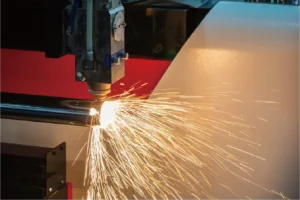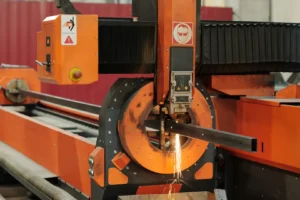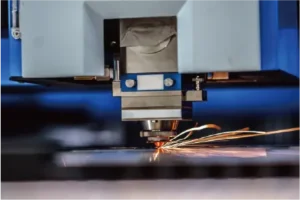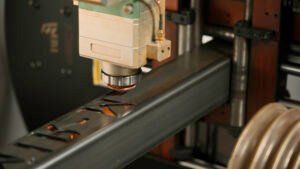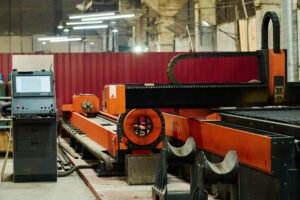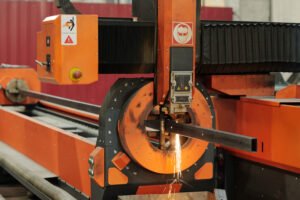Inside Our Factory: How We Build Tube Laser Cutting Machines
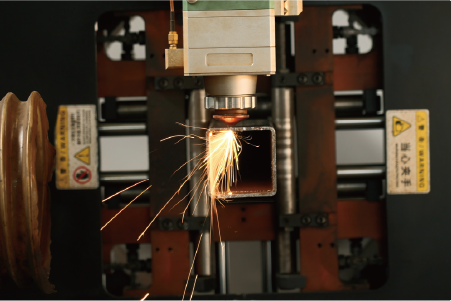
Are you struggling with inefficient metal tube processing1, slow production, or high operational costs? Many manufacturers face these hurdles, impacting their profitability and growth. At MZBNL, we understand these challenges, which is why we meticulously engineer every tube laser cutting machine to deliver unparalleled precision, speed, and automation, transforming your production line.
At MZBNL, building a tube laser cutting machine involves a rigorous, multi-stage process, from initial design and material sourcing to precision assembly, exhaustive testing, and final customization. Our commitment to innovation ensures each machine delivers high-speed, high-precision cutting, addressing core industry needs for efficiency and quality.
You might wonder what truly sets an MZBNL machine apart. It’s not just about the final product; it's the journey—the careful thought, the precise engineering, and the unwavering dedication that goes into every single machine we build. Join me as I walk you through the heart of our operations, revealing the meticulous steps that transform raw materials into the advanced laser cutting solutions our global clients rely on.
When we conceptualize a new machine at MZBNL, we don't just consider current market demands; we critically analyze future industry trends and our clients' evolving pain points. For instance, traditional reliance on skilled CAD operators was a significant hurdle, as Ahmed Al-Farsi, one of our key clients from the UAE, frequently highlighted. His business, like many, faced high operator turnover and retraining burdens. This feedback compelled us to innovate beyond standard practices, leading to our proprietary No-CAD operating system2. This wasn't merely an upgrade; it was a fundamental shift, allowing operators just one day of training versus 15. This forward-thinking approach, combining client-centric insights with our 25 years of metal fabrication expertise and 30+ patents, ensures our machines aren't just technologically advanced but are truly practical solutions for real-world production challenges. We constantly challenge existing norms, aiming to provide systems that not only perform but genuinely simplify and enhance our clients' operational efficiency and profitability.
Step 1: Initial design and engineering of the tube laser cutting machines
Many businesses face production bottlenecks due to outdated machinery designs that lack efficiency and flexibility. These limitations can cripple output, increase waste, and hinder your ability to meet diverse client demands. At MZBNL, our design process begins with a deep dive into industry challenges, ensuring our machines are engineered from the ground up for optimal performance and adaptability.
The initial design and engineering phase for MZBNL tube laser cutting machines involves extensive research, conceptualization, and detailed 3D modeling by our expert R&D team. This foundational step integrates client feedback and technological innovations like our No-CAD system to ensure precision, efficiency, and ease of use in the final product.
As the owner of MZBNL, I can tell you that the heart of any exceptional machine lies in its initial design. It's here, in the quiet hum of our R&D department, where ideas take shape and problems are solved long before a single piece of metal is cut. We understand that our clients, like Ahmed Al-Farsi in the UAE, aren't just buying a machine; they're investing in a solution that needs to seamlessly integrate into their existing workflows and address their specific operational pain points. This is why our engineers don't just draw blueprints; they meticulously craft solutions. We spend countless hours analyzing every possible scenario, every material type, and every potential user interaction to ensure that what we design is not just cutting-edge but also incredibly practical and user-friendly. Our goal is to preemptively tackle challenges like the need for skilled CAD operators or inefficient material handling, ensuring that from the very first sketch, we're building a machine that transforms your productivity.
[img placehold]
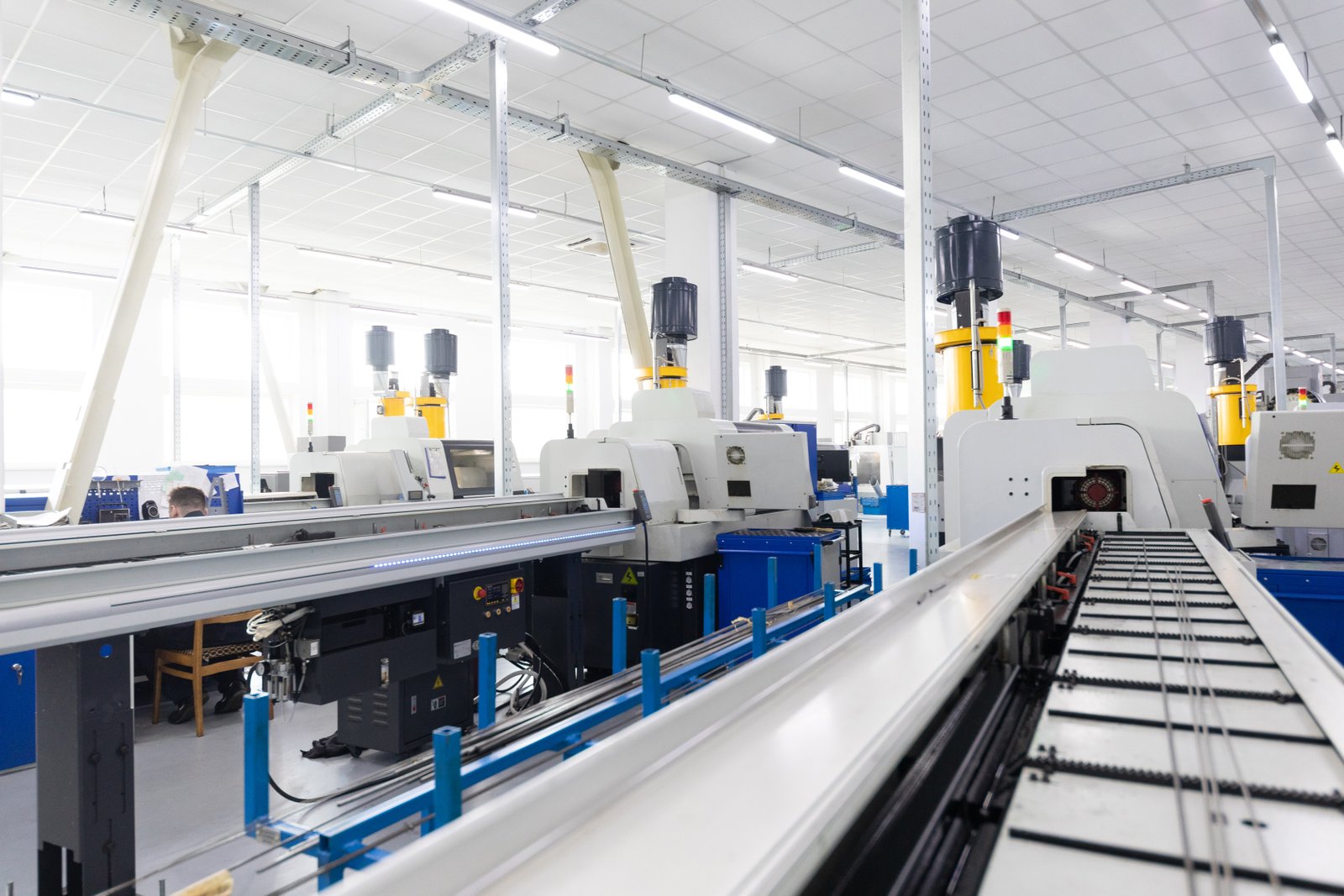
User-Centric Innovation in Design Philosophy
Our design philosophy at MZBNL is deeply rooted in user-centric innovation, moving beyond mere technical specifications to address real-world operational challenges. This approach is exemplified by our groundbreaking No-CAD system. Traditionally, operating a laser tube cutting machine demanded highly skilled CAD drafters to create or modify complex 3D drawings, often leading to significant delays and increasing labor costs. We heard this pain point repeatedly from clients, particularly those expanding rapidly like Ahmed Al-Farsi, who needed to streamline their production without escalating demands on specialized personnel.
Our engineers spent years researching and developing an intuitive interface that allows operators to process standard tube types and hole patterns simply by entering parameters. This dramatically lowers the skill threshold, transforming a previously complex task into something manageable after just one day of on-site training, compared to the industry norm of 15 days at the equipment factory. This innovation not only boosts efficiency but also democratizes access to advanced manufacturing, making high-precision cutting accessible to a broader workforce and reducing the impact of operator turnover, a critical issue for many fabrication businesses.
The integration of such user-centric features is not accidental; it’s a direct response to comprehensive market analysis and direct feedback from our 4000+ global clients. We study the workflows of metal pipe processing factories, furniture manufacturers, and automotive parts producers to identify common bottlenecks. For instance, the need for rapid setup and tool-less operation continually emerged as a priority. By integrating these insights from the initial design phase, we ensure that every design iteration brings us closer to a machine that doesn't just cut metal but truly enhances the entire production ecosystem for our users.
Data-Driven Optimization and Simulation
At the core of our engineering process is a robust commitment to data-driven optimization. Before any physical prototype is built, our design team leverages advanced simulation software, including Finite Element Analysis (FEA) and Computational Fluid Dynamics (CFD). These powerful tools allow us to predict machine performance under various loads, identify potential stress points, and optimize structural integrity and cooling systems. For example, in designing the gantry and machine bed, FEA simulations help us ensure maximum rigidity and vibration dampening, crucial for achieving the high-speed and high-precision cutting that our machines are known for.
This analytical rigor extends to our cutting logic. We collect extensive data from our existing machines and laboratory tests on various metal types and thicknesses. This data informs the algorithms embedded in our control systems, ensuring optimal laser power, cutting speed, and gas pressure settings for different applications. This scientific approach minimizes material waste and maximizes throughput. For instance, internal studies showed that by optimizing cutting parameters based on real-world data, we could reduce scrap rates by up to 15% for common structural steel tubes compared to general industry averages, significantly impacting our clients' bottom lines.
The Zero-Waste Tail Material innovation is a prime example of data-driven design in action. By meticulously analyzing typical cutting patterns and material utilization, we realized that conventional systems wasted valuable tail material. Our redesigned cutting logic, which calculates from the rear chuck as the origin, was developed after simulating countless cutting scenarios. This allowed us to eliminate leftover tail material, as long as the remaining section is smaller than the product length, boosting material utilization by up to 5% on average for continuous production runs compared to standard methods. This critical focus on data ensures that our designs are not only theoretically sound but also practically superior, delivering tangible benefits to our clients.
Material Selection and Technological Integration
The selection of materials and the integration of cutting-edge technology are paramount in our design phase, ensuring both durability and advanced functionality. We critically evaluate every component, from the high-precision linear guides and servo motors to the laser source itself, against stringent quality and performance benchmarks. Our experience over 25 years has taught us that compromising on material quality invariably leads to higher maintenance costs and reduced machine lifespan for our clients. Therefore, we partner with world-renowned suppliers for critical components, ensuring reliability and performance consistency.
This extends to the integration of smart and digitalized systems. Our machines are designed to be connected, offering capabilities for remote diagnostics, production monitoring, and predictive maintenance. This level of technological integration allows us to provide unparalleled post-sales support and helps clients like Ahmed Al-Farsi reduce downtime. For example, if Ahmed's machine experiences an anomaly, our support team can often diagnose the issue remotely, guiding his technicians or dispatching the right spare parts immediately, significantly shortening resolution times compared to traditional models that require extensive on-site troubleshooting.
We also consider the multi-process integration capabilities from the outset. Our Automatic Punching & Cutting Integrated Machine, for instance, wasn't just an add-on; it was designed with the seamless flow of different processes in mind. This foresight allows our clients to achieve higher productivity by combining operations that previously required separate machines and manual handling. This holistic design approach ensures that our machines are not just robust and reliable but also intelligent and adaptable, supporting the diverse and evolving needs of modern metal fabrication.
| Design Principle | Key Benefit to Client | Impact Metric (Approx.) |
|---|---|---|
| No-CAD System | Reduced operator training | 15 days -> 1 day |
| Front-Feeding | Increased feeding efficiency | +40% |
| Zero-Waste Tail | Maximized material utilization | Up to 5% reduction in scrap |
| Smart Diagnostics | Minimized downtime | Faster issue resolution |
No-CAD reduces training timeTrue
MZBNL's No-CAD system reduces operator training from 15 days to just 1 day by eliminating complex CAD requirements.
Traditional CAD is more efficientFalse
Client feedback shows traditional CAD systems create bottlenecks, while MZBNL's No-CAD solution increases operational efficiency.
Step 2: Sourcing high-quality materials and components
The performance and longevity of any machine are often compromised by the use of inferior or inconsistent materials. This can lead to frequent breakdowns, inaccurate cuts, and unexpected operational costs, undermining your investment. At MZBNL, we prioritize sourcing only the highest-quality, globally recognized materials and components3 to guarantee the reliability and precision of every machine we build.
Sourcing high-quality materials and components for MZBNL tube laser cutting machines involves a rigorous global selection process, prioritizing durability, precision, and consistency. We partner with established suppliers for critical parts like laser sources, servo motors, and guides, ensuring each machine meets our exacting performance and longevity standards.
After the intricate blueprints are finalized, the next crucial step is transforming those designs into tangible reality, and this hinges entirely on the quality of the materials we use. As Eric Liu, the owner of MZBNL, I personally oversee our sourcing strategies because I understand that even the most innovative design can be undermined by subpar components. Our commitment to our clients, like Ahmed Al-Farsi who seeks proven technology and global references4, means we leave no stone unturned in ensuring that every bolt, every sensor, and every laser component meets our exceptionally high standards. This is not just about cost; it's about guaranteeing the precision, durability, and reliability that our 4000+ global clients have come to expect. It's about ensuring that when you invest in an MZBNL machine, you're investing in a product built to last, perform, and deliver consistent quality for years to come, minimizing your operational headaches and maximizing your return on investment.
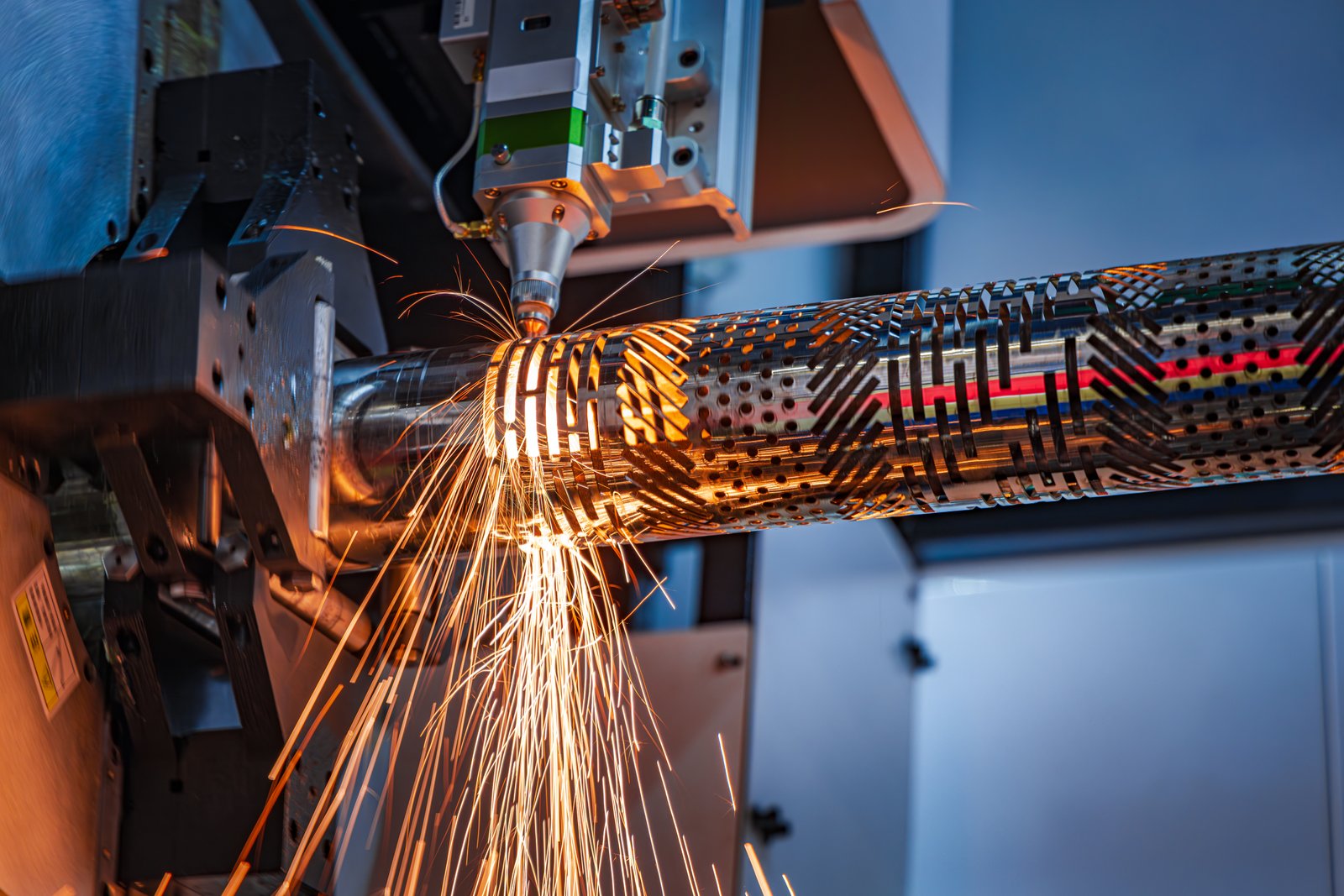
Strategic Global Supplier Partnerships
Our approach to sourcing at MZBNL is built on strategic global partnerships rather than simple transactional purchasing. We recognize that the quality of our tube laser cutting machines is directly tied to the integrity of their individual components. Therefore, we meticulously vet and establish long-term relationships with leading international suppliers5 renowned for their precision engineering and material excellence. For instance, key components like our high-power laser sources are sourced from top-tier German or American manufacturers, ensuring unparalleled beam quality and stability, which directly translates to cleaner, faster, and more precise cuts for our clients.
This isn't merely about brand names; it's about verifiable performance. We conduct rigorous audits of our suppliers' manufacturing processes, quality control systems, and material traceability. Our procurement team, working closely with our R&D engineers, evaluates components not just on their individual specifications but on their integrated performance within our machine architecture. This critical assessment helps us mitigate risks associated with material inconsistency, a common pain point in the industry that can lead to unexpected machine failures and costly downtime for businesses.
By fostering these deep partnerships, we gain access to the latest material science advancements and component innovations. This collaborative ecosystem allows us to continually upgrade our machine's capabilities, ensuring that MZBNL remains at the forefront of laser cutting technology. For instance, our discussions with bearing manufacturers might lead to the adoption of advanced ceramic bearings that offer superior wear resistance and higher rotational speeds, directly enhancing the machine's overall operational lifespan and precision compared to standard steel bearings, offering a clear competitive advantage.
Precision Components and Performance Impact
Every component chosen for an MZBNL machine is selected for its direct impact on performance and reliability. Consider the linear guides and servo motors – these are the backbone of precise motion control. We opt for high-grade linear guides that boast exceptional rigidity and minimal friction, allowing for rapid acceleration and deceleration without sacrificing accuracy. Coupled with high-torque, high-resolution servo motors from reputable Japanese or European brands, our machines achieve cutting speeds up to 120m/min and positioning accuracy down to ±0.05mm.
The choice of control system hardware and software is equally critical. Our smart and digitalized systems rely on robust industrial-grade PLCs (Programmable Logic Controllers) and sophisticated HMI (Human-Machine Interface) panels. These components are chosen for their processing power, reliability in industrial environments, and seamless integration with our proprietary No-CAD operating system. This careful selection ensures not only ease of operation but also the stability required for complex, multi-process integration, like our punching capabilities.
The discerning eye of a client like Ahmed Al-Farsi, with his strong engineering background, appreciates this level of detail. He seeks turnkey solutions with proven technology. Our ability to demonstrate the provenance and performance data of each critical component provides him with the confidence that he is investing in a machine built with integrity from the ground up, differentiating us from suppliers who might compromise on component quality to lower initial costs, ultimately leading to higher total cost of ownership. This transparency reinforces our commitment to long-term value.
Quality Control and Supply Chain Resilience
Our commitment to quality extends deep into our supply chain, integrating rigorous quality control measures from the point of origin. Every batch of incoming materials and components undergoes stringent inspection upon arrival at our factory. This includes dimensional checks, material composition analysis (where applicable), and functional testing to ensure they meet the exact specifications laid out during the design phase. Any deviation, no matter how minor, results in immediate rejection and remediation with the supplier.
We also maintain a resilient supply chain strategy, diversifying our sourcing channels for critical components where feasible. This proactive approach minimizes disruptions due to geopolitical factors, natural disasters, or single-source dependency, ensuring a steady flow of materials to meet our production demands. This resilience is vital for our global clients, as it directly impacts machine lead times and their ability to plan their production schedules effectively. For example, during global supply chain challenges, our diversified approach allowed us to maintain production levels better than many competitors, ensuring our clients received their machines within agreed timelines.
Ultimately, our extensive experience of 25 years in metal fabrication has taught us that shortcuts in sourcing lead to long-term problems. We view our suppliers not just as vendors but as extensions of our quality commitment. This partnership approach, coupled with exhaustive incoming inspections and supply chain diversification, underpins the superior quality, durability, and consistent performance of every MZBNL laser tube cutting machine, ensuring that our clients receive a product that truly stands the test of time and heavy industrial use.
| Component Category | Sourcing Strategy | Key Quality Metrics | Expected Impact |
|---|---|---|---|
| Laser Source | Top-tier global (DE/US) | Beam quality, stability, power | Cutting speed & precision |
| Servo Motors | Reputable (JP/EU) | Torque, resolution, reliability | Motion accuracy & speed |
| Linear Guides | High-grade industrial | Rigidity, friction, wear resistance | Durability, precision |
| Control System | Industrial-grade PLC | Processing power, stability, integration | Ease of use, system reliability |
Material quality affects machine longevityTrue
The text explicitly states that inferior materials compromise performance and longevity, leading to breakdowns and operational costs.
MZBNL sources components locally onlyFalse
The text describes a global sourcing strategy with partnerships in Germany, America, Japan, and Europe for critical components.
Step 3: The precision assembly process of mechanical and electronic systems
Even with the best components, a machine’s performance can be undermined by imprecise assembly. Sloppy construction leads to vibrations, misalignment, and frequent breakdowns, costing you time and money. At MZBNL, our assembly process is a meticulous dance of precision, ensuring every mechanical and electronic system integrates flawlessly for peak performance and longevity.
The precision assembly process at MZBNL combines advanced robotics with skilled craftsmanship to meticulously integrate mechanical and electronic systems. This phase ensures perfect alignment, secure connections, and optimal functionality, guaranteeing the high-speed and high-precision cutting capabilities of our tube laser machines.
Once we have meticulously sourced the highest quality materials and components, the true artistry of machine building begins: the assembly. This is where our innovative designs transform from blueprints into robust, functional systems. As Eric Liu, I've seen firsthand how crucial this stage is. It's not simply about putting parts together; it's about the precise alignment of every axis, the secure wiring of every circuit, and the meticulous calibration of every sensor. We understand that our clients, like Ahmed Al-Farsi, prioritize turnkey solutions that are easy to install and operate, and this ease begins right here, in our assembly line. Our highly skilled technicians, with years of experience, work with an unwavering commitment to perfection, ensuring that every MZBNL machine is built to the exact specifications required for high-speed, high-precision cutting and multi-process integration6. This dedication at the assembly stage minimizes future headaches for our clients, ensuring reliable operation from day one.
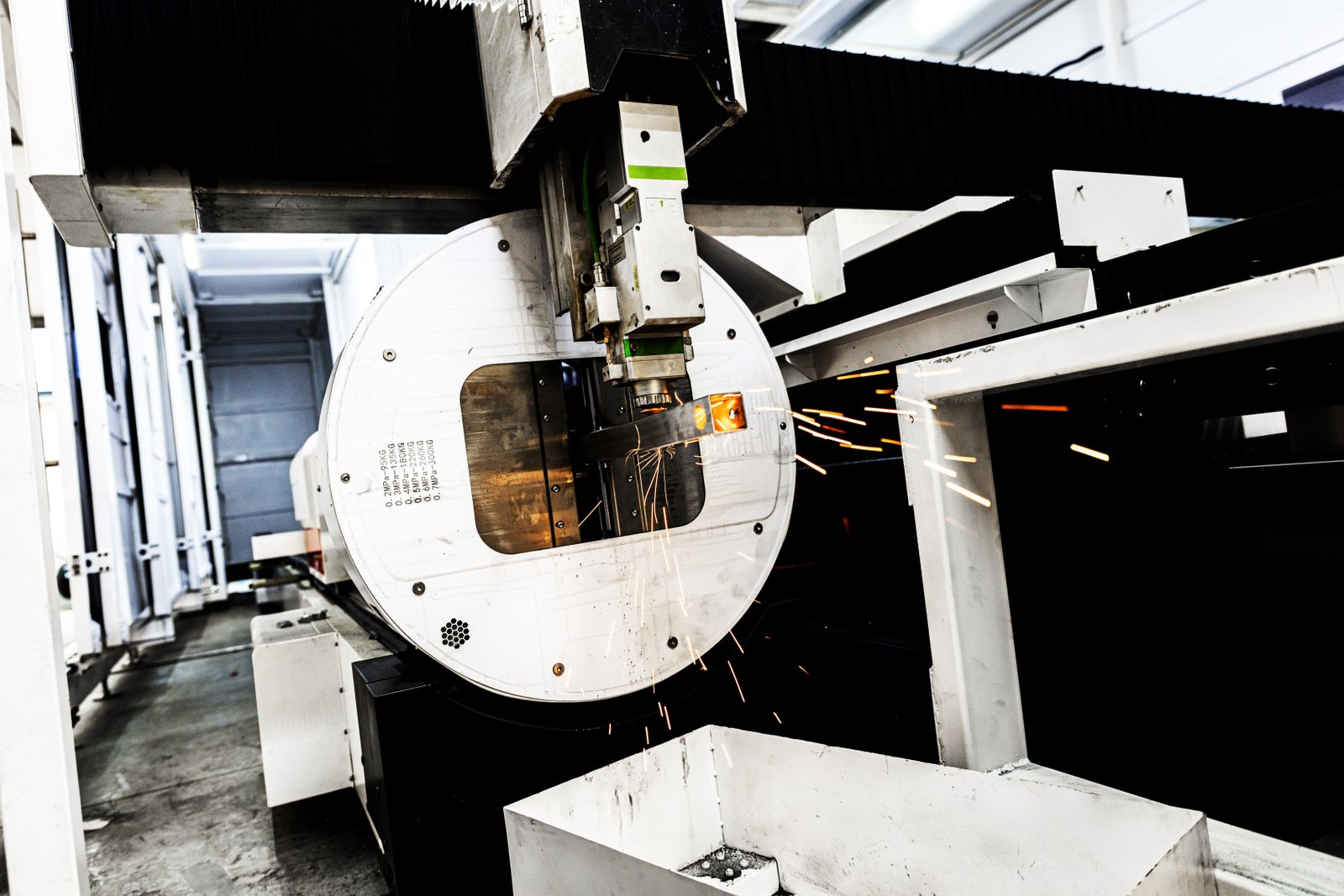
Mechanical Assembly: Foundation of Precision
The mechanical assembly phase is the cornerstone of our machines' precision and stability. It begins with the heavy-duty machine bed, which is meticulously leveled and secured to provide an unyielding foundation. Our robust frame designs are fabricated from high-grade steel, then stress-relieved to prevent deformation over time, a critical step often overlooked by lesser manufacturers. This foundational integrity is essential for maintaining the sub-micron accuracy required for high-speed laser cutting over long operational periods.
Following the bed, the gantry and cutting head assembly are integrated. This involves the painstaking alignment of linear guides and motion components. We utilize specialized alignment tools and laser interferometers to ensure parallelism and straightness within micrometers, far exceeding basic industry standards. Any deviation at this stage would result in inaccuracies in cutting, impacting both product quality and material yield. Our technicians, who undergo continuous training, are masters of this intricate work, understanding that even a fractional misalignment can compromise the machine's ultimate performance.
Consider the example of our Front-Feeding Innovation. The seamless integration of this automatic feeding mechanism into the machine's mechanical structure is a testament to our precision assembly. While traditional machines relied on side or rear manual loading, our optimized front-feeding requires perfect mechanical synchronization between the loading arms and the main chuck. This intricate setup, meticulously assembled and calibrated, increases feeding efficiency by about 40% and reduces operator labor intensity by approximately 40%, directly impacting productivity for our clients, especially those with high-volume production needs.
Electronic Integration and Smart Systems
Parallel to mechanical assembly, the electronic integration is a complex process that brings the "intelligence" to our machines. Our skilled electricians meticulously wire and connect thousands of components, from the powerful laser source and high-resolution servo drives to intricate sensor arrays and the main control cabinet. Every connection is crimped, secured, and labeled according to stringent international electrical safety standards and our own exacting internal protocols. This attention to detail prevents electrical failures, minimizes electromagnetic interference, and ensures the machine's long-term reliability.
The heart of our electronic system is our proprietary smart and digitalized control unit. This unit is carefully installed and connected to all critical sensors and actuators, enabling real-time monitoring of machine parameters, predictive maintenance, and remote diagnostics. This intelligence is a key differentiator for MZBNL, providing our clients with unprecedented control and insight into their operations. For a client like Ahmed Al-Farsi, whose business relies on consistent uptime, the ability for our team to perform remote diagnostics and even guide his technicians through troubleshooting is invaluable, significantly reducing potential downtime.
The integration of our No-CAD Operating System during this phase is paramount. This system is loaded, configured, and tested to ensure it communicates flawlessly with all mechanical and electronic components. Our engineers configure the intuitive interface, ensuring standard tube types and hole patterns can be processed simply by entering parameters. This complex software-hardware synergy, meticulously validated during assembly, is what empowers operators to be productive after just one day of training, directly addressing the pain point of skilled CAD operator reliance and high operator turnover that many businesses face.
Rigorous Testing and Quality Gates
Throughout the assembly process, we implement multiple quality gates and checkpoints, ensuring that no machine proceeds to the next stage until all current requirements are met. This includes visual inspections, functional tests of individual sub-assemblies, and electrical continuity checks. For example, after the gantry is assembled, its motion accuracy is tested extensively using laser tracking systems to verify that it moves along its intended path with absolute precision before the cutting head is installed.
Once the complete machine is assembled, it undergoes a series of comprehensive pre-testing procedures. This involves power-up tests, software functionality checks, and preliminary cutting trials. We simulate various real-world cutting scenarios, ensuring that all machine axes move smoothly, the laser fires correctly, and all safety interlocks are functioning as designed. This proactive testing approach identifies and rectifies any potential issues early in the process, preventing them from escalating into more significant problems down the line.
Our commitment to a zero-waste philosophy extends to the assembly line. By precisely assembling components and rigorously testing them at each stage, we minimize the need for rework and component replacement. This meticulous approach not only ensures the high quality of our machines but also reflects our efficiency and sustainable manufacturing practices, underscoring our leadership in the industry with innovations like Zero-Waste Tail Material7. This dedication to precision at every step means our clients receive a machine that is robust, reliable, and ready to deliver peak performance from the moment it arrives in their factory.
| Assembly Stage | Key Precision Focus | Quality Control Method | Expected Outcome |
|---|---|---|---|
| Mechanical Bed | Leveling, Rigidity | Laser Interferometer, Stress Relief | Foundational stability |
| Gantry/Axes | Alignment, Smooth Motion | Laser Tracking System, Micrometer Checks | High-speed, high-precision cutting |
| Electronics | Wiring, Connectivity | Electrical Safety Checks, Functional Tests | System reliability, remote diagnostics |
| Software | Integration, Functionality | Comprehensive Software Testing | User-friendly, No-CAD operation |
Precision assembly ensures machine longevityTrue
Meticulous assembly prevents vibrations and misalignment that cause breakdowns.
Assembly is just putting parts togetherFalse
Assembly involves precise alignment, calibration and integration of complex systems.
Step 4: Rigorous testing and quality assurance procedures
Even the most advanced machines can harbor hidden flaws that compromise performance and lead to costly downtime. Without exhaustive testing, these issues can emerge unexpectedly, disrupting production and damaging your reputation. At MZBNL, our machines undergo a multi-stage, rigorous testing and quality assurance process8, guaranteeing every unit meets our stringent performance, precision, and reliability standards.
MZBNL’s rigorous testing and quality assurance procedures involve multi-stage functional, precision, and endurance tests, including real-world cutting trials on various materials. This exhaustive validation ensures every tube laser cutting machine achieves peak performance, high accuracy, and unwavering reliability before it leaves our factory.
As Eric Liu, the owner of MZBNL, I can unequivocally state that our commitment to excellence doesn't end with assembly; it truly crystallizes during our rigorous testing and quality assurance phase. This isn't just a formality; it's a critical, multi-layered process designed to push every machine to its limits, identifying and rectifying any potential anomaly before it ever reaches your facility. We understand that our clients, like Ahmed Al-Farsi, prioritize reliable, proven technology and expect flawless operation from day one. That's why we meticulously test every function, every component, and every cutting parameter, simulating the demanding conditions of industrial use. This exhaustive validation ensures that when an MZBNL machine arrives at your factory, it's not just ready to operate—it’s ready to excel, delivering the high-speed, high-precision, and cost-effective performance you've invested in, minimizing your risks and maximizing your productivity.
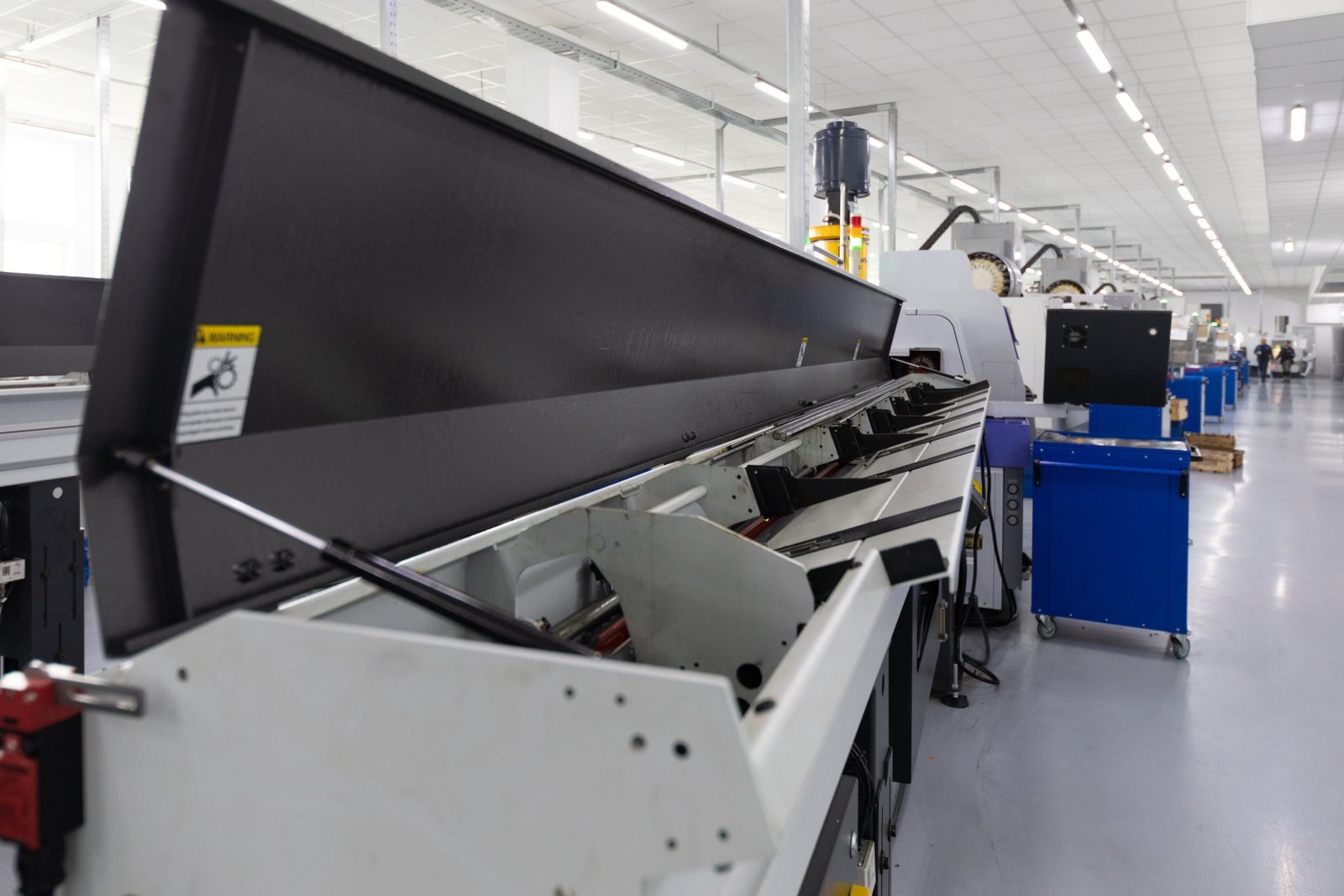
Functional and Performance Validation
The initial stage of our quality assurance involves comprehensive functional and performance validation. This includes power-up sequences, verification of all safety interlocks, and checks of every motor and sensor. Each axis of motion is tested for smooth travel, acceleration, and deceleration, ensuring they meet our exacting speed specifications, such as rapid traverses of up to 120m/min. Our technicians meticulously verify that the No-CAD system9 correctly interprets parameter inputs and translates them into precise machine movements, ensuring ease of operation as advertised.
We then proceed with extensive cutting trials using various materials, including carbon steel, stainless steel, and aluminum, across a range of thicknesses commonly used in the industries our clients serve, such as furniture manufacturing and architectural decoration. For each material and thickness, we evaluate cut quality, edge finish, kerf width, and dimensional accuracy. Data from these trials is rigorously compared against our internal benchmarks and industry standards. For instance, we track circularity deviations for holes and straightness for long cuts, ensuring they remain within our guaranteed ±0.05mm precision tolerance.
This hands-on testing is crucial for validating our innovations. The Front-Feeding mechanism, for example, undergoes repeated loading and unloading cycles to ensure its 40% efficiency increase is consistently achieved under various conditions, including different tube lengths and weights. Similarly, the Zero-Waste Tail Material system is tested with numerous product lengths to confirm its ability to eliminate waste when the remaining section is smaller than the product length, ensuring maximum material utilization for our clients. These real-world simulations are vital for proving the practical benefits of our design philosophy.
Precision Calibration and Endurance Testing
Following functional validation, each machine undergoes a rigorous precision calibration process. Using advanced laser interferometers and ball bar testing systems, we precisely calibrate the machine's geometric accuracy, including straightness, perpendicularity, and parallelism of all axes. This level of calibration ensures that the machine consistently delivers the high-precision cutting required for critical applications like automotive and motorcycle parts production, where even minor deviations can compromise product integrity. We record these calibration results, providing a detailed quality report for each machine.
Endurance testing is a non-negotiable part of our quality assurance. Each laser cutting machine is subjected to extended periods of continuous operation, simulating heavy industrial use. This often involves running automated cutting programs for several days or even weeks. During this period, we monitor critical parameters such as laser power stability, temperature fluctuations, and component wear. This exhaustive testing identifies any potential weaknesses that might only surface under prolonged stress, ensuring the machine's long-term reliability and robustness.
This deep dive into endurance allows us to guarantee the machine’s longevity and performance over its lifespan. For our clients like Ahmed Al-Farsi, who expects a stable, long-term business solution, this process is critical. He needs equipment that performs reliably for years, minimizing unscheduled maintenance. Our 25 years of experience have shown that skipping this step is a costly mistake; detailed endurance testing significantly reduces warranty claims and builds customer trust by delivering machines that stand up to the rigors of continuous production.
Data-Driven Quality Control and Traceability
Our quality assurance process is underpinned by a robust, data-driven approach10. Throughout every testing stage, vast amounts of performance data are collected and analyzed. This includes cutting speeds, power consumption, machine vibration levels, and component temperatures. This data is logged and cross-referenced with design specifications and historical performance benchmarks. Any deviation triggers an immediate investigation and corrective action, ensuring that only machines meeting or exceeding our stringent standards are cleared for shipment.
Furthermore, we implement a comprehensive traceability system for all critical components and assembly steps. Every machine has a detailed digital record, documenting the origin of key parts, the assembly technicians involved, and the results of every test performed. This meticulous record-keeping allows us to rapidly diagnose and address any field issues, providing unparalleled post-sales support and spare parts availability. This is particularly important for our global clients across Southeast Asia, Europe, and North America, who rely on efficient remote diagnostics and timely support.
Our quality assurance protocols are continuously reviewed and updated based on field performance data from our 4000+ global enterprise clients and the latest industry best practices. This iterative improvement cycle ensures that MZBNL machines not only meet current industry benchmarks but often set new ones. By combining rigorous, multi-stage testing with data-driven analysis and full traceability, we guarantee that every tube laser cutting machine leaving our factory delivers the high-tech performance, precision, and long-term reliability that MZBNL is known for.
| Testing Stage | Key Objective | Key Metrics / Tools | Client Benefit (Example) |
|---|---|---|---|
| Functional Validation | Verify all systems work | Cut quality, speed, No-CAD function | Immediate productivity on site |
| Precision Calibration | Ensure geometric accuracy | Laser interferometer, Ball Bar | Consistent high-quality output |
| Endurance Testing | Prove long-term reliability | Continuous run time, Component wear | Minimal downtime, longer machine lifespan |
| Data-Driven QC | Proactive issue detection | Performance logs, Deviation analysis | Optimized operation, faster support |
MZBNL tests machines exhaustivelyTrue
The company conducts multi-stage functional, precision, and endurance tests to ensure peak performance.
Testing is just a formalityFalse
Testing is described as a critical, multi-layered process that pushes machines to their limits.
Step 5: Final adjustments and customizations before shipping
Standard machines rarely fit every unique production environment, leading to inefficient integration and suboptimal performance. Without tailored solutions, businesses face compromises, limiting their true operational potential and ROI. At MZBNL, we provide meticulous final adjustments and bespoke customizations11, ensuring your machine is perfectly optimized for your specific operational needs before it even leaves our factory.
The final stage before shipping MZBNL tube laser cutting machines involves precise adjustments and critical customizations to meet client-specific requirements. This ensures optimal integration into their unique production environments, encompassing software configurations, specific tooling, and tailored accessory setups for immediate, high-performance operation upon delivery.
The moment a meticulously engineered and thoroughly tested machine approaches its completion at MZBNL, it enters a critical final phase: customization and fine-tuning. As Eric Liu, I understand that while our core machines are industry-leading, every client's factory floor, every production goal, and every operational workflow is unique. This is where our commitment to tailored solutions truly shines. We don't just ship a machine; we deliver a precisely configured production asset. For clients like Ahmed Al-Farsi, who explicitly values customization and turnkey solutions, this final stage is paramount. It ensures that when his MZBNL laser tube cutting machine arrives, it integrates seamlessly into his operations, ready to perform specific tasks for his architectural metalwork or vehicle parts supply business, maximizing his investment from day one and minimizing any on-site setup challenges.

Client-Specific Software and Program Customization
The customization process often begins with software adjustments to align with the client’s specific production needs. While our No-CAD operating system is designed for intuitive parameter-based processing, many clients have unique part geometries or production sequences that benefit from pre-programmed templates. Our software engineers work directly with client specifications to upload and configure these specific programs, ensuring that the machine is ready to cut the exact products they require, whether it’s intricate furniture components or specialized automotive tubing, from the moment it’s powered on.
This includes tailoring the machine’s digital interface and reporting features. For example, a client like Ahmed Al-Farsi, who is focused on automating existing manual workflows, might require specific production reports or integration points for his existing enterprise resource planning (ERP) system. We configure the machine’s data output formats and communication protocols to ensure seamless data flow, enabling better production monitoring, cost analysis, and inventory management. This level of software customization moves beyond standard operation, turning the machine into a truly intelligent part of their digital factory ecosystem.
Furthermore, we offer specialized cutting libraries for unique material types or geometries that might be outside the standard parameters. This ensures optimal laser settings, cutting speeds, and gas pressures are pre-configured, preventing trial-and-error on the client's side and immediately maximizing cutting efficiency and quality. This deep software integration and customization mean that our machines are not just versatile in theory but are practically optimized for the client’s specific business model, directly impacting their profitability and turnaround times.
Physical Adjustments and Accessory Integration
Beyond software, critical physical adjustments and the integration of client-specific accessories are performed. This can range from configuring specialized chucks or clamps for non-standard tube shapes to installing auxiliary equipment like automated loading/unloading systems12 that complement our Front-Feeding Innovation. Each physical modification is meticulously carried out by our assembly team, followed by re-calibration and testing to ensure that the modifications do not compromise the machine's core precision or performance.
For clients involved in multi-process integration, such as those utilizing our Automatic Punching & Cutting Integrated Machine, this stage includes fine-tuning the punching tools and synchronizing their operation with the laser cutting head. This ensures perfect alignment between laser cuts and punched holes, eliminating secondary operations and improving overall production flow. We might also adjust the machine’s footprint or layout to fit specific factory floor constraints, collaborating closely with the client's facility planners.
A practical example is tailoring the machine’s safety features to align with specific regional safety regulations or client internal protocols. This might involve adjusting safety interlocks, light curtains, or emergency stop button placements. While our machines meet international safety standards, these client-specific adaptations ensure full compliance and enhanced operator safety in their unique working environments. This meticulous attention to detail ensures that the machine is truly a turnkey solution, ready for immediate and safe operation upon arrival.
Pre-Shipment Validation and Documentation
Before any machine is crated for shipping, it undergoes a final, comprehensive pre-shipment validation. This is a complete re-run of critical functional tests and a final visual inspection by a senior quality assurance manager. This final check acts as a last line of defense, ensuring that all customizations have been correctly implemented and that the machine is in impeccable condition for transit. This step is crucial for maintaining our reputation for delivering high-quality, ready-to-use equipment to our global clients.
Simultaneously, we prepare exhaustive documentation tailored to the client's specific machine configuration. This includes detailed operation manuals, maintenance guides, spare parts lists, and customized training materials, often translated into the client's native language or English for broader accessibility. For clients like Ahmed Al-Farsi, who values post-sales training and support, this comprehensive documentation is invaluable, empowering their staff to operate and maintain the machine effectively from day one.
Finally, the machine is expertly packaged and prepared for international shipping. Our packing process considers the rigors of long-distance transport, employing specialized crating and moisture protection to safeguard the machine's delicate components. We ensure all necessary export documentation is complete and accurate, facilitating smooth customs clearance in destination countries like the UAE, North America, or Europe. This end-to-end service, from design to delivery, highlights our commitment to providing a truly comprehensive solution, reinforcing our position as a preferred supplier with proven technology and global references.
| Customization Type | Description | Example Client Need | Benefit Delivered |
|---|---|---|---|
| Software Programming | Pre-loading specific cutting programs/templates | Furniture parts with complex cuts | Immediate production, reduced setup |
| Interface/Reporting | Tailoring data output for ERP integration | Automated production monitoring | Better data analysis, operational insight |
| Physical Integration | Adapting to specific factory layouts/tools | Non-standard tube sizes | Seamless workflow, optimal fit |
| Safety Compliance | Adjusting features for regional regulations | Specific safety interlocks | Enhanced operator safety, regulatory compliance |
Customization enhances ROITrue
Tailored adjustments ensure machines deliver maximum value from day one by fitting perfectly into client operations.
Standard machines fit all needsFalse
The text explicitly states standard machines rarely fit unique production environments, requiring custom solutions.
Conclusion
At MZBNL, building tube laser cutting machines is a precise journey from user-centric design and meticulous component sourcing to expert assembly, exhaustive testing, and tailored customization. Our commitment to innovation, quality, and client-specific solutions ensures every machine delivers unparalleled efficiency and reliability, empowering businesses worldwide to achieve superior metal fabrication.
-
Discover how to overcome inefficiencies and improve manufacturing profitability ↩
-
Understand how No-CAD systems simplify operations and reduce training time ↩
-
Discover the benefits and potential drawbacks of using inferior materials in laser cutting machines. ↩
-
Learn how global references of technology can build trust and ensure quality in machine investments. ↩
-
Gain insights into the top suppliers known for precision and material excellence in the industry ↩
-
Learn how combining multiple processes can enhance machine efficiency ↩
-
Discover how this innovation increases material utilization and efficiency ↩
-
Learn about multi-stage QA processes to ensure product reliability and performance. ↩
-
Discover the benefits of No-CAD systems in simplifying laser cutting operations. ↩
-
Understand how data analysis in QA improves product standards and traceability. ↩
-
Learn how tailoring solutions can enhance operational efficiency and ROI for laser cutting technology. ↩
-
Discover how automation systems improve productivity and efficiency in laser cutting processes. ↩
Have Questions or Need More Information?
Get in touch with us for personalized assistance and expert advice.


